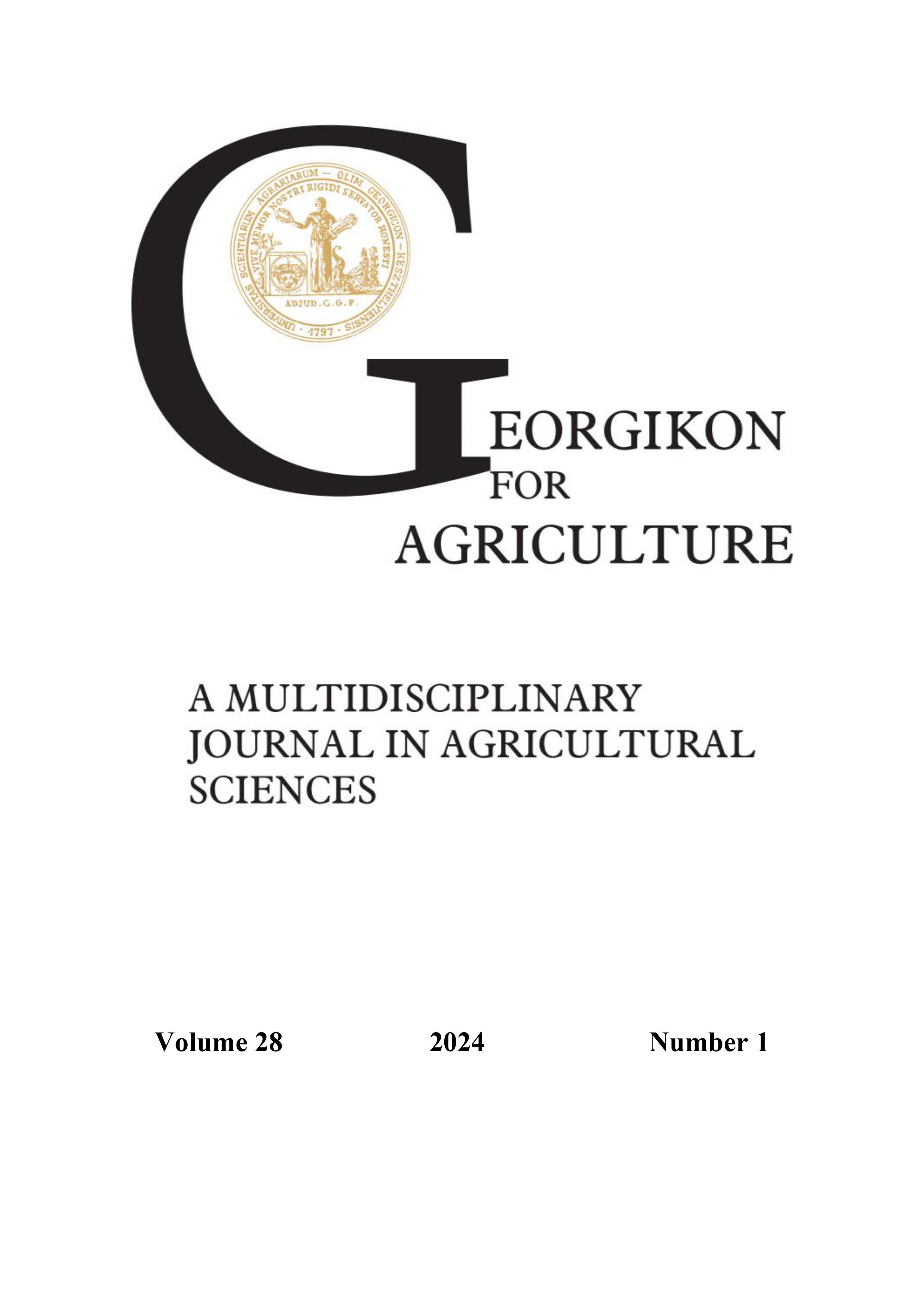Differences between ex-situ and in situ germination and seedling establishment in the case of the marsh gladiolus (Gladiolus palustris)
DOI:
https://doi.org/10.70809/6551Keywords:
endangered plants, recruitment, population biology, age-state, Gladiolus palustrisAbstract
The marsh gladiolus (Gladiolus palustris Gaud.) is a species of community interest in the European Union, and it’s strictly protected by law in Hungary. Survival of its populations is threatened by a number of factors, so thorough knowledge on the biology of the species is required for its conservation and long-time survival. To interpret the data collected in local populations, it is essential to examine the dynamics between age-stage categories and study germination rates of seeds in the populations. For this purpose, ex-situ and in-situ germination biology studies were set up to monitor the development of individuals starting from germination and establish a suitable age-stage categorization system for demographic purposes. During the autumn of 2023, seeds were sown in an open forest and in a meadow (in-situ), and seeds from these sites were sown in containers (ex-situ) at the same time. Germination rates were considerably higher in the ex-situ sowing than in the in-situ experiment for seeds of both origins. Moreover, there were significant differences between the average height (leaf length) of the seedlings. Under in-situ conditions average height was significantly larger in the open forest than in the meadows. There were significant differences between average height of seedlings in the in-situ and ex-situ experiments only during the first measurement, which differences became less pronounced later on.
References
Amişculesei, P., Apostol, M., Munteanu, N., Draghia, L. 2022. The effect of temperature and stratification times on seeds germination of some Gladiolus species. Scientific Papers. Series B. Horticulture. 66 (1) 609–623.
Bilz, M. 2011. Gladiolus palustris. The IUCN Red List of Threatened Species 2011: e.T162188A5555329. https://doi.org/10.2305/IUCN.UK.2011-1.RLTS.T162188A5555329.en
Borhidi, A. 1995. Social behaviour types, the naturalness and relative ecological indicator values of the higher plants in the Hungarian Flora. Acta Botanica Hungarica. 39 (1/2): 97–181.
Brunzel, S. 2010. Ex-situ-Kultivierung und In-situ-Management als Beitrag zum Artenschutz am Beispiel von Frauenschuh (Cypripedium calceolus), Sumpf-Gladiole (Gladiolus palustris), Böhmischer Enzian (Gentianella bohemica) und Karpaten-Enzian (Gentianella lutescens). Naturschutz und Landschaftsplanung. 42 (5) 148–156. (in German)
Dutt, M., Katwate, S. M., Patil, M. T., Nimbalkar, C. A., Sonawan, P. C. 2000. Effect of Gibberellic acid (GA3) soaking on the germination of hybrid seeds of Gladiolus. Journal of Maharashtra Agricultural Universities. 25 (3) 313–314.
Fernández, J. A., Balenzategui, L., Bañón, S., Franco, J. A., González, A., López, J. 2005. Germination study in three species of genus Gladiolus. Acta Horticulturae. (683) 301–306. https://doi.org/10.17660/actahortic.2005.683.36
Gatsuk, L. E., Smirnova, O. V., Vorontzova, L. I., Zaugolnova, L. B., Zhukova, L. A. (1980). Age States of Plants of Various Growth Forms: A Review. The Journal of Ecology. 68 (2) 675–696. https://doi.org/10.2307/2259429
Harper, J. L. 1977. Population biology of plants. Academic Press, London, 892 p.
Rabotnov, T.A. 1969. On coenopopulations of perennial herbaceous plants in natural coenoses. Vegetatio Acta Geobotanica. 19 87–95. https://doi.org/10.1007/BF00259005
Ramzan, A., Hafiz, I. A., Ahmad, T., Abbasi, N. A. 2010. Effect of priming with potassium nitrate and dehusking on seed germination of gladiolus (Gladiolus alatus). Pakistan Journal of Botany. 42 (1) 247–258.
Silvertown, J., Franco, M., Pisanty, I., Mendoza, A. N. A. 1993. Comparative plant demography - relative importance of life-cycle components to the finite rate of increase in woody and herbaceous perennials. Journal of Ecology. 81 465–476. https://doi.org/10.2307/2261525
Vakhrameeva, M. G., Tatarenko, I. V., Varlygina, T. I., Totosyan, G. K., Zagulskii, M. N. 2008. Orchids of Russia and adjacent countries. ARG Gantner Verlag KG, 690 p.
Vidéki, R., Máté, A. 2006. Mocsári kardvirág (Gladiolus palustris). Fajmegőrzési terv, KvVM Természetvédelmi Hivatal, pp. 2–20. (in Hungarian)
Downloads
Published
Issue
Section
License
Copyright (c) 2024 Lábadi Vivien, Pacsai Bálint, Bódis Judit

This work is licensed under a Creative Commons Attribution-NonCommercial-NoDerivatives 4.0 International License.
Cikkre a Creative Commons 4.0 standard licenc alábbi típusa vonatkozik: CC-BY-NC-ND-4.0. Ennek értelmében a mű szabadon másolható, terjeszthető, bemutatható és előadható, azonban nem használható fel kereskedelmi célokra (NC), továbbá nem módosítható és nem készíthető belőle átdolgozás, származékos mű (ND). A licenc alapján a szerző vagy a jogosult által meghatározott módon fel kell tüntetni a szerző nevét és a szerzői mű címét (BY).




